In 2003, I left NYC and started a graduate fellowship at the Indianapolis Museum of Art; at the same time my classmate and friend, John Campbell, started a graduate fellowship at MoMA. He worked there for three years during the time when the museum was transitioning from its temporary space in Queens. He also worked at Christian Scheidemann’s studio, Contemporary Conservation, for two years before becoming the head of conservation at the Nasher Sculpture Center in Dallas, TX.
Richard McCoy: How many outdoor sculptures are currently on view at your museum?
John Campbell: Well, that’s kind of a moving target because a lot of our works can be displayed indoors or out.
Right now we have 24 works featured in our sculpture garden. We recently had the installation Boolean Valley, a collaboration between potter Adam Silverman and architect Nader Tehrani, installed in our ponds.
And we also have an installation of four works outside of the international terminal at the Dallas Fort Worth Airport. These works are Anthony Caro’s Fanshoal (1971-72), John Newman’s Torus Orbicularis (1988), Mac Whitney’s Chicota (2001), and Isaac Witkin’s Hawthorne Tree, Variation III (1990).
RM: Of course, you have one of James Turrell’s “skyspaces” called Tending, (Blue), which was completed when the building opened in 2003. Will you talk about its care and maintenance?
JC: What’s interesting about that piece is that it’s cared for much in the same way as the museum building, so our operations department handles most of the ongoing maintenance issues.
At least once a year, the sheetrock used to make the edge of the opening to the sky is reworked to ensure there’s a crisp line. We also have an electrician on staff that ensures the LEDs that are part of the choreographed light show near the entrance are functioning properly.
Our housekeeping staff regularly cleans the inside of the piece so I don’t have a lot to do with it physically.
RM: I noticed on the Nasher Sculpture Center’s Facebook page that you were cleaning some organic growth out of the pond where Boolean Valley was installed. That looked interesting.
JC: Yeah, that’s been tough. It’s the first time we’ve had an installation in the pond so I’m still learning about it. Since the water is serene, the algae grows rapidly. As a result we now own a “Pondovac 4 Pond Vacuum.” It’s a lot like a wet-dry vac, but it actually pulls water through the machine and filters out the biological growth.
We’re also having issues with the hard water local to the area. Although we are able to treat the water used to clean the sculptures in the sculpture garden using a large scale, reverse osmosis system, it is not financially viable to treat the water for the sprinklers and fountains. As a result, the minerals in the water are depositing on the works. The Boolean Valley elements, for example, have developed white rings along the water line.
RM: It’s interesting to compare your role in taking care of the Turrell and Boolean Valley.
JC: I’m involved with Boolean Valley in a hands-on way because those pieces are ceramic and require conscientious handling. And not involved with the Turrell, because the particular expertise needed to do the repairs is specialized.
But I think this issue comes down to the questions of “where do you need the specialist,” and “where do you need the conservator’s skills the most.” If an artwork needed a light bulb changed periodically, do you need a conservator or could you use a technician to do something like that?
RM: Well, I suppose it all depends on the artwork. I think of Robert Rauschenberg’s work, First Landing Jump (1961) at MoMA that has a little blue light bulb in it. I wonder who changes that?
JC: Having worked there, I can say that the conservators change that lightbulb. I think of that piece as more of an artwork proper than of an architectural installation.
When I started working at the Nasher in September of 2007, I was a bit uncomfortable with our operations department doing all of the work on the Turrell so I started a relationship with the department. And not long after that they asked me what I would use to clean the stone floor and benches inside the room.
But as far as sheetrocking: I’m happy to trust a professional sheetrocker to do a great job on our Turrell. That’s what they do. It’s the same thing with a sculpture that might need a weld repair. I’m not set up to do welding at the Nasher, so I’d look for an expert to work with.
RM: Do you often have interns working with you?
JC: Absolutely! Hosting internships is something I really enjoy. It’s a great opportunity for exchange in conservation-related thought and technique. I benefit from the exchange by staying in tune with graduate programs and what they’re teaching. Also, I’m able to provide interns an opportunity to see what it’s like to work in a museum environment and supplement their knowledge with things that I’ve learned through my education and experience.
This summer I hosted Nicole Berastequi, a pre-graduate school intern, and Rose Daly, a graduate program intern. Rose is a student in The Winterthur/University of Delaware Program in Art Conservation who worked with me before continuing on to complete her graduate fellowship at the Nelson-Atkins Museum of Art (NAMA). During a recent visit to NAMA I was surprised to discover that they had several of the same pieces in their outdoor collection as we do. We each have one of George Segal’s Rush Hour, Magdalena Abakanowicz’s Bronze Crowd, and we both have Henry Moore sculptures. They also have pieces from the Raymond and Patsy Nasher Collection that were sold in the late 1980s.
The pre-graduate school intern, Nicole, received her BFA in theater and BA in art history from Southern Methodist University in 2004. Before working with me, she spent two summers at Southern Methodist University’s archaeological Etruscan excavation at Poggio Colla and worked in a private conservation studio here in Dallas. She’s also a budding theater star. In the end, though, she’s interested in going on to graduate school in conservation.
RM: I know that Rose runs her own blog called, Daly Conservation, and is active on Twitter (@rosedaly). What has it been like having an intern working for you that is also active with social media?
JC: It’s been fantastic working with Rose. I tried to express the importance of her strengths in this area to her academic advisor at the University of Delaware. Of course the Winterthur program was interested in my evaluation of her dexterity and her approach to conservation treatments, but I didn’t want them to overlook her abilities in with social media, which are phenomenal. This summer Rose met with the Nasher’s web and social media staff on behalf of the conservation department to discuss ways for us to grow conservation’s online presence. She also advised an emergent group of conservators in the Northern Texas region about ways to coordinate their meetings and projects online. It didn’t take long to realize that Rose not only has a sound knowledge of the wide-range of tools currently available, but I was also impressed with her pragmatic approach in the assignment of social media applications to fulfill an organization’s particular needs. As a result, while working with me, I tried to encourage her to focus on both her conservation treatments as well as her web efforts.
RM: I hear that the Nasher is developing a strategic plan. Can you talk about conservation’s role in developing the plan and vision for the next five years?
JC: That’s an interesting question, but first I want to point out that most institutions the size of the Nasher Sculpture Center (30 staffers) don’t even have conservation labs. They usually hire out that expertise the same way we hire a sheetrocker to take care of the Turrell. We’re fortunate that Raymond Nasher felt that conservation was an important aspect of the institution he first envisioned. He wanted the museum to be a national and international resource—not only for our amazing collection, but he also felt the conservation department should be a part of our reputation. Maybe his awareness was a result of the conservation profession becoming more visible in the greater museum field in the 1990s. Also, as you probably know, last year, the museum hired Jeremy Strick as its second director. Coming from the Los Angeles Museum of Contemporary Art (MOCA), with its large conservation department, I know my efforts will be well supported. Having said all of that, one of the things I would like to focus on is our use of social media and the web. I look forward to using it as a way to publicize information about conservation to a variety of audiences, including scholars, curators, and registrars.
RM: What research projects are you working on?
JC: Recently I’ve picked up the baton from my predecessor, Joanna Rowntree, who initiated a research project with the Getty Conservation Institute (GCI) on a technical study of Jean Dubuffet’s Gossiper II (1969-70, enlargement 1984). This sculpture has had issues with uncured two-part resins over the years and requires regular attention. GCI scientists Michael Schilling and Herant Khanjian recently presented their collaborative research about the Dubuffet at the 2010 The Infrared and Raman Users Group (IRUG) meeting in Buenos Aires.
Speaking of the Getty, I was interested to read the new GCI book Conserving Outdoor Sculpture: The Stark Collection at the Getty Center. Its debut inspired me to think of it as an excellent jumping-off point for conservators in this specialty to expand our view in the organization and dissemination of conservation needs of modern and contemporary outdoor works.
There are a lot of people that take care of outdoor sculptures, and they often work in a kind of artistic guild mode, keeping a lot of what they do to themselves and their techniques proprietary. So I’m beginning to think about ways in which we can start putting this information online or perhaps having a symposium at the Nasher Sculpture Center. Stay tuned.

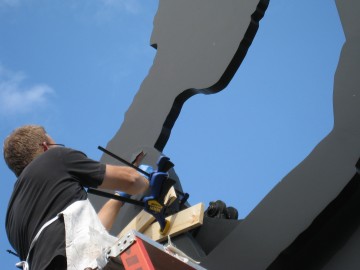
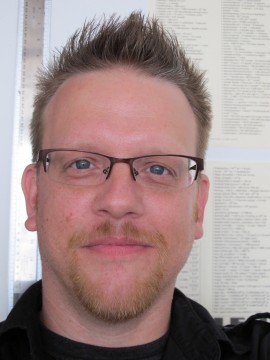

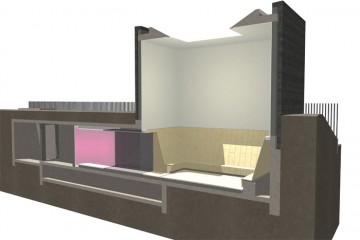
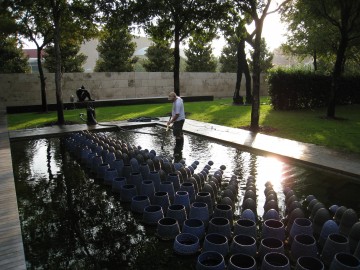
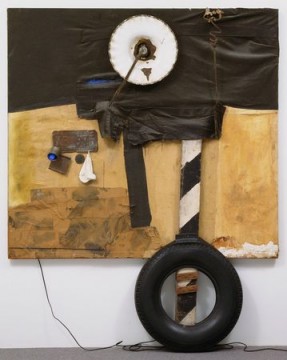
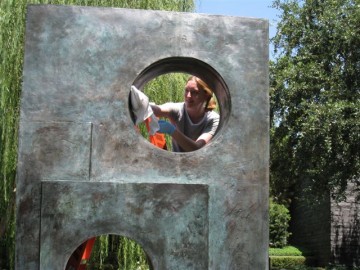





Pingback: Online Meanderings « Dan Cull Weblog
Pingback: Caring for Outdoor Sculptures: An Interview with John Campbell by Richard McCoy | Maura McGurk
Pingback: No Preservatives | News and Notes | Art21 Blog